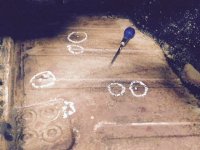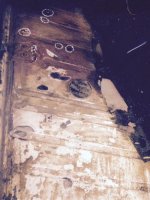Offline
Jeepers. I pulled up the carpet in my "new" '66 TR4A and found that the prior owner did, in fact, glue a thin sheet of foam to the entire floor and firewall area. We're talking "glued" every square millimeter with the only removal means being my finger tips and a plastic scraper. Hours and hours.
And just as Geo and others over the years warned, the foam did a great job of holding moisture in and causing some rust that likely never would've been there otherwise. A real bad choice by any calculation.
So here are my questions.
I'm going to sand away the rust areas, but how thin is too thin, and can I strengthen the floor and repair the rusted areas using fiberglass mesh sheeting? The rusted areas are spotty and small, like on the passenger side maybe 7 areas 1/2 inch by 3/4 inch. Some spot rust areas, too.
And just as Geo and others over the years warned, the foam did a great job of holding moisture in and causing some rust that likely never would've been there otherwise. A real bad choice by any calculation.
So here are my questions.
I'm going to sand away the rust areas, but how thin is too thin, and can I strengthen the floor and repair the rusted areas using fiberglass mesh sheeting? The rusted areas are spotty and small, like on the passenger side maybe 7 areas 1/2 inch by 3/4 inch. Some spot rust areas, too.

 Hi Guest!
Hi Guest!

 smilie in place of the real @
smilie in place of the real @
 Pretty Please - add it to our Events forum(s) and add to the calendar! >>
Pretty Please - add it to our Events forum(s) and add to the calendar! >> 



